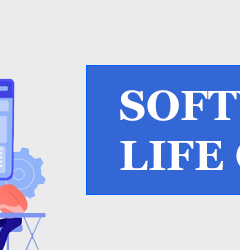08 Oct

Application testing is an important phase in the software development life cycle, whose main goal is to verify the functionality of a piece of software and its compliance with the required specifications. The basic purpose of many techniques is to assess some facet of the software to reveal problems, validate operations, and measure performance.
Here’s an Overview Of The Key Software Testing Techniques:
➛ Black Box Testing
Black box testing is a method of software testing whereby the person testing does not require any information about how the examined application works. In this process, the tester only inputs data into the software and only reads processing results without knowing the program code and its structure. The primary goal here is the usage of the application and its ability to perform in a desired manner. Common black box testing techniques include:
Equivalence Partitioning: Partition testing is a technique that checks one element in each of the divisions of the input data where the reaction of the software is supposed to be similar.
Boundary Value Analysis: Checking the edges and the line in between the partitions there most probably would be mistakes.
Decision Table Testing: Develop a decision table that includes all possible input combinations of the problem and decides in advance the outcome that each combination should produce to exhaust all possibilities.
State Transition Testing: Verifying the movement of the software from one state to another to determine its behavior where the system’s behavior is relative to the current state.
➛ White Box Testing
Clear box, glass box, or white box testing is a kind of testing in which the internal workings of an application are tested. The tester is aware of the internal code and architecture and designs tests to make certain that the inside operations run as they are supposed to. Key techniques under white box testing include:
Unit Testing: The process of verifying an individual module or portion of the entire software so that that particular section of it works properly.
Code Coverage Analysis: Calculating the ratio of the code sizes as covered by the tests, to have high coverage, thus getting better tests for most parts of the code.
Statement Coverage: The need to guarantee that all the statements in the program code are run at least once.
Branch Coverage: It means checking all the possible branches (true or false) in the code.
Path Coverage: Making Sure all paths of the code have been covered by the test.
Control Flow Testing: Controlling the flow of the software through explicit and repetitive tests to identify control structures such as loops and conditions.
➛ Grey Box Testing
Grey box testing is considered as an infiltration of black box and white box testing. Here, the tester has a limited understanding of the app’s flow and how it is structured, which makes the testing process better. The technique is particularly useful in integration testing where all the internal elements as well as the interfaces are tested.
➛ Static Testing
Static testing is a software testing method in which the software’s code, documentation, and any other tangible requirements are inspected without the usage of the application. This technique is usually applied to find out different defects at the initial stage of development. Common static testing techniques include:
Code Reviews: Code reviews by other students or programmers to find problems ranging from pentad logic mistakes or operational errors, violations of guidance for coding practices, or the presence of flaws that are likely to emerge as bugs.
Static Analysis Tools: Static analysis tools that crawl through the source code looking for issues such as vulnerabilities, code smells, and other defects but do not run the program.
Walkthroughs and Inspections: Pre-scheduled sessions in which the development team reviews the design of the software, implementation code, or any other entity that has been developed to find faults.
➛ Dynamic Testing
In dynamic testing, one runs the software and looks for problems, and ensures that the software operates correctly. It applies to all levels of testing which includes unit testing, integrated testing, system testing, and even acceptance testing. Key dynamic testing techniques include:
Functional Testing: Mainly, the testing is done to ensure that the software operates as it is required to do as per the specifications provided.
Non-Functional Testing: This is the exercise of the software to check on its non-functional features like speed, ease of use, and insecurity.
Performance Testing: Evaluating the performance of the software: The ability of software to respond to various situations, its stability, and how it utilizes the available resources.
Load Testing: Benchmarking of the application to check how the software works when a high amount of load is applied.
Stress Testing: The process of putting the software through pressure to determine its ability to deal with stress or overloading.
Regression Testing: Performing regression testing where an application is run again to confirm that the changes that have been made do not introduce new faults.
➛ Exploratory Testing
Exploratory testing is an informal, ad-hoc testing technique in which the tester tends to test the application without any prior prepared scripts. The tester is experienced and applies his/her logic to determine situations that may likely have defects and then creates and runs tests on the spot. This technique is very helpful in finding unknown problems and getting better insight into the software system when it is used in the real environment.
➛ Acceptance Testing
Acceptance testing is done with the purpose of testing the software to its business requirements and its suitability for deployment. This testing is mostly done by the customers or the end-users to ascertain that the software offers the required value. Key types of acceptance testing include:
User Acceptance Testing (UAT): Verifying the developed software against the requirements of the users, as to whether they have been met.
Operational Acceptance Testing (OAT): Affirming that all software is ‘production ready’, that is, backup/restore disaster recovery, and maintenance.
Conclusion
Software testing is a vital and integral component of the whole software development life cycle as it helps to determine that the delivered product is both safe to use and operator-friendly. Using methods like black box, white box, grey box, static and dynamic, exploratory and acceptance tests, testers can be sure in the product quality determination and in early defects’ detection for contributing to the product success solely. All the technique has specific uses and they build a comprehensive coverage of the software testing.
Read More: Future Of Software Testing Services




Nikhil Trivedi